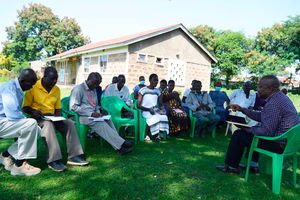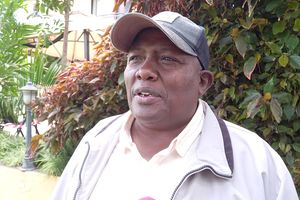Kenya on track to reducing new HIV cases, shows report

The pre-exposure prophylaxis.
What you need to know:
- Kenya was commended as it was one of the three countries in Africa that had new strategies to increase the use of antenatal care services for low-income residents by introducing health facility committees.
- Kenya also did well in terms of HIV prevention strategies such as male circumcision and the use of pre-exposure prophylaxis (PrEP).
The country’s plan to reduce adult HIV/Aids infection is on course, but the goals for diagnosis, treatment and viral suppression are yet to be met, a new United Nations Programme on HIV/Aids (UNAIDS) report shows.
The report dubbed ‘In Danger’ shows that Kenya had a 48 per cent reduction of new adult infections in 2021.
Kenya was commended as it was one of the three countries in Africa that had new strategies to increase the use of antenatal care services for low-income residents by introducing health facility committees. This led to a 20 per cent increase of such services, which are key for enlightening mothers on prevention methods for mother-to-child transmissions.
On the flip side, the country was faulted for prosecuting women living with HIV for breastfeeding and hence allegedly exposing their newborns to new infections.
Kenya also did well in terms of HIV prevention strategies such as male circumcision and the use of pre-exposure prophylaxis (PrEP).
The report shows that PrEP support groups based at drop-in centres in Nairobi helped in progressing PrEP adherence and retention among female sex workers from 22 per cent to 60 per cent in just 12 months
It is advisable that 90 per cent of men and boys in select 15 high priority countries in Eastern and Southern Africa have voluntary medical male circumcision to help in the risk of HIV.
“Kenya appears to be the only priority country to have reached the 90 per cent threshold although other countries (notably Ethiopia and the United Republic of Tanzania) are within reach of the target,” said the report.
The report also highlights the effects of diversion of key resources to Covid-19 globally; sidelining other infectious diseases such as HIV/Aids. Consequently, about 1.5 million people worldwide were infected with HIV last year and 650,000 people died of HIV/Aids related causes.
“Lingering effects of the Covid-19 pandemic disrupted services and led some countries to reallocate their finite health resources away from the HIV response. Civil unrest, drought and flooding also impede HIV service provision and affect the commitment of countries to continue prioritising the HIV response,” said the report.
Earlier this year, a tweet from the United States of America Ambassador to Kenya Eric Kneedler suggested Kenya had achieved the ambitious 90-90-90 UNAIDS target. This meant that 90 per cent of Kenyans living with HIV know their status, 90 per cent of those diagnosed are on treatment and 90 per cent of those on treatment have achieved viral suppression.
While his statement received accolades from people online, the Health ministry did not openly respond to that seemingly positive allegation. However, data released by the National Aids Control Council in February this year showed only 12 of the 47 counties had achieved this target.
The UNAIDS report clears that air as it shows that six countries in the African region namely; Botswana, Eswatini, Malawi, Rwanda, Zambia and Zimbabwe, reached the pass mark by 2020.
According to the report, Kenya in 2020 had achieved only 73 per cent of the viral suppression. The data is not clear on diagnosis and treatment.
While other endemic countries are trying to attain the next set goal of 95-95-95 by 2025; adolescents, youth and women remain the most affected group.
The new infections data shows that women and girls account for 63 per cent of people living with HIV.
“New HIV infections are three times higher among adolescent girls and young women (aged 15 to 24 years) than among males of the same age. Since 2010, the decline in new HIV infection has been much sharper among adolescent boys and young men (56 per cent) than among adolescent girls and young women (42 per cent) or older women (aged 25 to 49 years) (29 per cent),” said the report.
The Health ministry’s new National Reproductive Health Policy glaring gap on age of consent for sexual reproductive health services is a ticking time bomb for a rise in infection. Already, data from the ministry shows there is a rise in HIV infections among adolescents, especially girls.
“Age of consent laws also impede efforts to ensure that adolescent girls and young women have access to HIV testing and sexual and reproductive health services,” said the report.
Even as the report shows that there were fewer new infections from children compared to a decade ago, Chip Lyons, chief executive of the Elizabeth Glaser Paediatric AIDS Foundation, said in a statement that countries can do better in preventing and treating HIV in children.
“Today’s report is a chilling indicator of the damning inequities facing children in the fight for an AIDS-free generation and speaks to the focused efforts still needed to end HIV and AIDS in children globally,” he said.
This remains a thorny issue since global health authorities differ on their stance.
For instance, the US Centre for Disease Control and Prevention advises against breastfeeding if a woman is living with HIV, while the World Health Organisation in its 2016 guidelines shows that women living with HIV should breastfeed their infants for at least 12 months.




